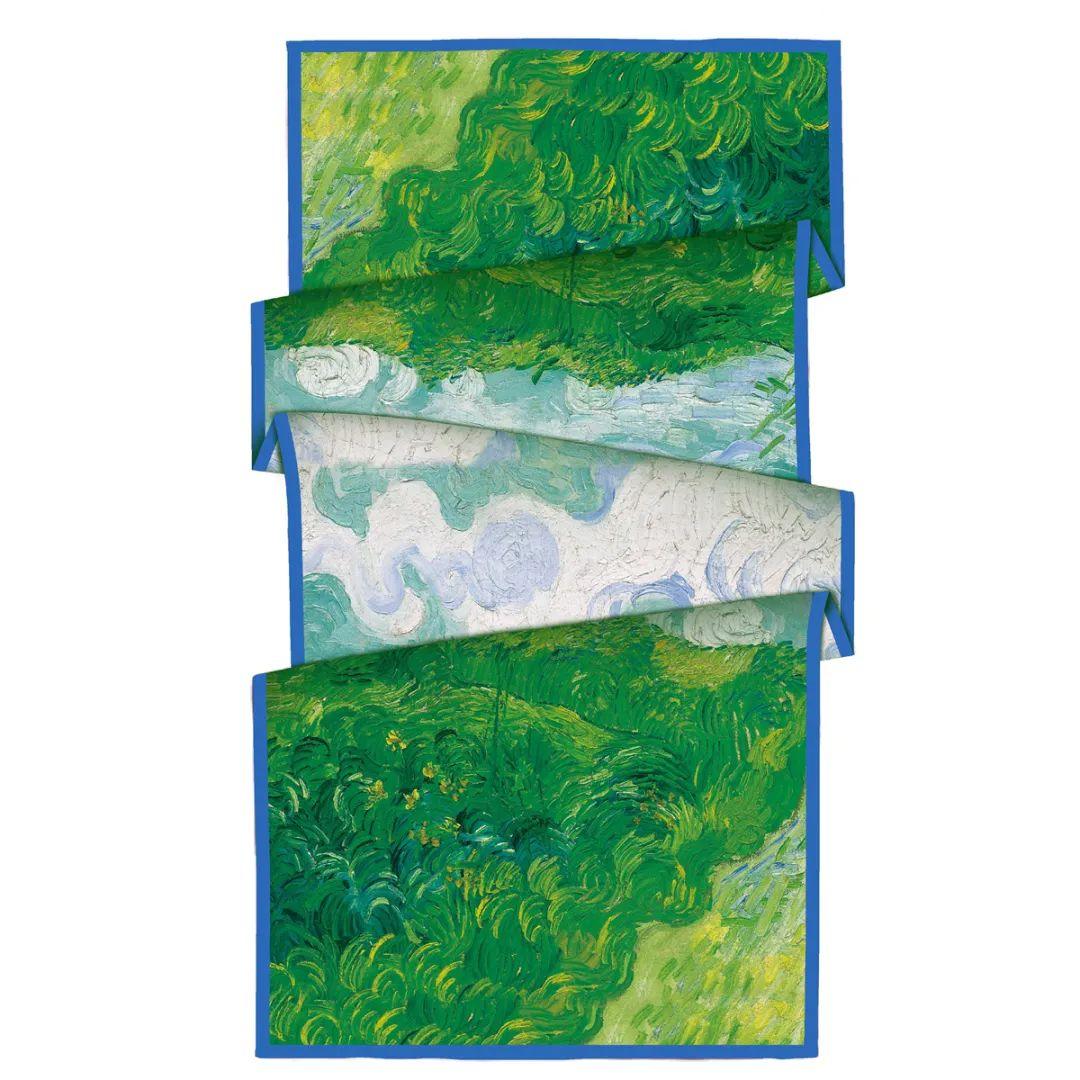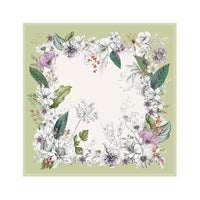Van Gogh’s Irises: A Symphony of Life and Color
Vincent van Gogh's Irises, painted in 1889 during his stay at the Saint-Paul-de-Mausole asylum in Saint-Rémy-de-Provence, is one of his most beloved works and a striking example of his brilliance in capturing the vitality of nature. It is a canvas teeming with life and color, where each stroke vibrates with the energy of the natural world and the depth of van Gogh’s inner turmoil. More than just a portrayal of irises, this masterpiece is a powerful expression of van Gogh’s emotional state, his reverence for the beauty of life, and his unrelenting drive to communicate through art, even in the face of personal suffering.

Creation and Context: The Struggles of a Genius
The creation of Irises was deeply rooted in van Gogh’s emotional and psychological struggles. In 1889, he was staying at the asylum in Saint-Rémy-de-Provence, grappling with mental illness. Despite the challenges he faced, this period also marked an intense burst of creativity. Van Gogh turned to nature for solace, and the irises he observed in the asylum’s garden became both his subject and, in many ways, his refuge. For van Gogh, painting was not merely a form of artistic expression but a lifeline, a means to channel his emotions and find stability in the midst of mental distress.
The vibrant blooms of Irises are not just flowers; they symbolize the artist’s relationship with life itself—his deep passion for nature, his acknowledgment of impermanence, and his struggle with inner darkness. The irises’ vivid hues—ranging from deep purples to bright yellows—mirror van Gogh’s emotional complexity. They are alive with motion, and their colors radiate with a sense of joy, yet they are not without an underlying tension, a sense of fragility that hints at the artist’s vulnerability.
Composition and Technique: The Boldness of Color and Form
In Irises, van Gogh adopts a dynamic composition that both emphasizes and distorts the flowers’ forms, heightening their dramatic presence. The irises dominate the foreground, their contours rendered with bold, expressive brushstrokes. Each petal seems to pulse with energy, capturing the essence of a living, breathing organism. Van Gogh’s distinctive impasto technique—where he layered thick, expressive strokes of paint—gives texture and vitality to the flowers, creating a three-dimensional effect that invites the viewer to almost touch the canvas.
The contrast between the irises' vivid blues and purples and the warm yellow backdrop creates a visual harmony that is both striking and soothing. The surrounding greenery is painted in muted tones, allowing the flowers to remain the focal point. This use of contrasting colors—another hallmark of van Gogh’s work—serves to accentuate the irises’ vibrant colors while also creating a sense of depth and movement within the composition.
Van Gogh’s composition also reveals his mastery in playing with perspective. The foreground is filled with an intense concentration of irises, while the background remains open, leading the viewer’s gaze through the canvas. This almost three-dimensional perspective gives the flowers an air of immediacy, as though they are emerging from the canvas itself. The leaves and stems twist and spiral, adding to the sense of energy and dynamism in the piece.
Symbolism and Emotional Depth: A Reflection of the Artist’s Psyche
Irises is not just a beautiful depiction of nature; it is a window into van Gogh’s emotional world. As with many of his later works, the irises become a metaphor for his own inner landscape. Their bright, fiery colors reflect his ongoing struggle with his mental health, as well as his desire to find solace and beauty in the chaos of his emotions. The vibrant irises could be seen as a symbol of his emotional vitality and determination, their strength in color a reflection of his will to keep creating despite his personal battles.
However, the flowers also seem to convey a sense of fragility. The brushstrokes are bold and forceful, yet the delicate nature of the flowers suggests vulnerability. This duality—a combination of vitality and fragility—echoes van Gogh’s own emotional conflict. The irises appear both vibrant and fleeting, as if suspended between life and decay. This tension reflects the way van Gogh experienced the world: intense, beautiful, and often filled with emotional turbulence.
Furthermore, van Gogh’s painting technique, heavily influenced by the Japanese ukiyo-e woodblock prints he admired, is evident in Irises. The sharp outlines, bold color contrasts, and the flattened, almost decorative quality of the composition reflect his fascination with Japanese art. The influence of Japanese aesthetics adds an element of stylization to the irises, giving them an otherworldly, timeless quality. This merging of Eastern and Western influences was one of the defining characteristics of van Gogh’s later work.
Legacy and Significance: A Timeless Tribute to Life’s Beauty
Irises holds a special place in the legacy of Vincent van Gogh. It is one of the many works that exemplify his ability to infuse ordinary subjects with extraordinary depth and emotion. Van Gogh’s depiction of nature is always infused with a sense of reverence, and in Irises, this reverence is palpable. The vibrant flowers, painted with a combination of passion and introspection, serve as a testament to his enduring love for life and his constant search for meaning through his art.
This masterpiece has become an iconic part of van Gogh’s oeuvre, capturing his unique style and emotional intensity. It continues to inspire artists and art lovers around the world, reminding us that art can be a profound expression of both beauty and pain. Irises is a celebration of the fleeting beauty of life, encapsulating in one canvas the tension between joy and sorrow, strength and vulnerability.
Today, Irises is housed at the J. Paul Getty Museum in Los Angeles, where it continues to captivate audiences with its vivid color, emotional intensity, and the spirit of its creator. The painting is a testament to van Gogh’s extraordinary ability to transform his personal struggles into something universally beautiful—a timeless tribute to the beauty and fragility of life itself.
Conclusion: A Painting Beyond Flowers
Van Gogh’s Irises is far more than a floral still life; it is an emotional and spiritual exploration of life’s complexity. Through his bold use of color, dynamic composition, and deep symbolism, van Gogh invites the viewer into his world, where flowers bloom with the intensity of his passions, fears, and dreams. Irises stands as a powerful reminder of van Gogh’s genius and his relentless pursuit of artistic expression, even in the face of adversity. It is a symphony of color and life, where every petal, every brushstroke, resonates with the artist’s unyielding spirit and love for the beauty of the natural world.






